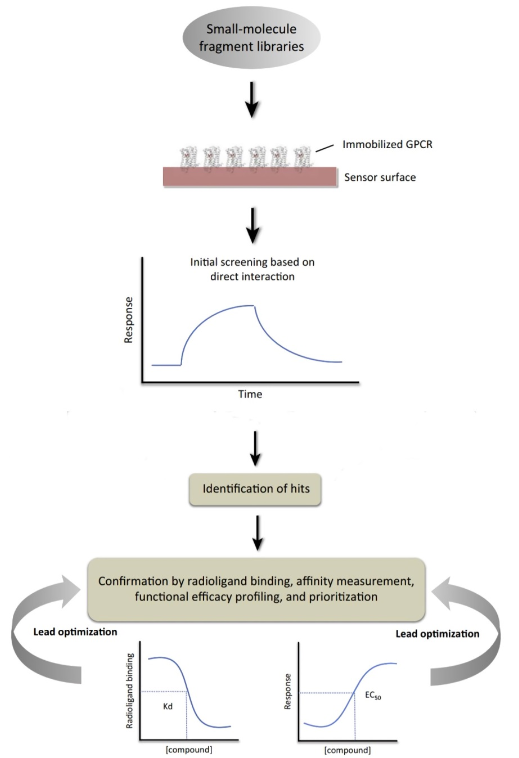Exosome Display-based Protein Array Screen
Exosomes, when combined with protein array screening, provide a promising method of high throughput drug screening platform against drug targets, especially for hard-to-prepare transmembrane proteins such as the G-protein-coupled receptors (GPCRs). To drive the development of drug discovery, Creative Biolabs is utilizing the exosome display technology as a receptor presentation platform for GPCR-targeted drug screening of cognate ligands or small molecules.
Introduction to GPCR Microarray
GPCRs represent the single most important class of drug targets. A number of GPCRs, however, have not been characterized in terms of their ligand specificity. The implementation of microarray methods is particularly relevant for the development of high-specificity ligands during the process of drug discovery. Traditionally, membrane preparations or purified membrane proteins are needed to be isolated and purified from their native environment, followed by immobilization onto the membrane-binding surfaces using approaches such as covalent or affinity directed immobilization, or noncovalent immobilization. However, arraying these proteins is a difficult process because of issues associated with maintaining the correctly folded conformations of proteins on solid substrates. Recently, exosome display technology is utilized for GPCR arraying for drug screening.
 Fig.1 Sensor-based Screening of GPCR Ligands. (Kumari, 2015)
Fig.1 Sensor-based Screening of GPCR Ligands. (Kumari, 2015)
Exosomes Providing GPCRs for Drug Screening
Exosomes, which are natural carriers of both soluble and membrane-bound proteins, are exploited to present membrane proteins, especially GPCRs on the surface of exosomes, for drug screening. One can simultaneously analyze the binding of compounds/ligands to multiple receptors by combining the exosome display technology with protein array screening methods. The use of exosome display for GPCR drug screening has shown advantages such as:
-
GPCRs displayed on the exosomal surface are functionally similar with the receptors found on the cell surface.
-
Exosomes represent an ideal source of drug targets because receptors are presented in their native conformation. The purification process of exosomes is devoid of any denaturing steps to keep the native conformation.
-
Significant amounts of recombinant GPCRs on exosomes can be obtained.
-
They provide advantages as a source of GPCRs over membrane preparations or purified receptors.
Features
-
The latest technical platform — exosome display is the innovative technique that applied for protein array screen.
-
A expert staff with extensive experience — they can help you design the optimal protocol for protein array screen.
-
A full range of technical guidance — our expert provide real-time technical trace.
-
High quality, consistent reproducibility, and timeliness of data analyses — we provide accurate and rapid analysis data.
Excellent experts in Creative Biolabs have engaged in exosome display-based protein array screen for many years, and they have accumulated extensive experience. We are very confident to offer the first-class protein array screen services based on exosome display. If you are interested in any of our services, contact us and start the conversation.
Reference:
-
Kumari.; et al. Emerging approaches to GPCR ligand screening for drug discovery. Trends in molecular medicine. 2015, 21(11): 687-701.
For Research Use Only. Cannot be used by patients.
Related Services:

 Fig.1 Sensor-based Screening of GPCR Ligands. (Kumari, 2015)
Fig.1 Sensor-based Screening of GPCR Ligands. (Kumari, 2015)








